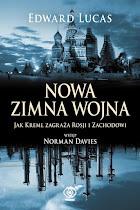Europe.view
Steamy scenes
Dec 30th 2009
From Economist.com
Bracing northern habits reach south-west London
YOUR columnist has recently moved house. Although his new garden is small, it does have enough room for a small hut, painted black and concealed by a trellis. It is a rarity in this part of the world. Most visitors assume it is a garden shed. Others know better. For Latvians, it is a “pirts”; for Lithuanians, a “pirtis”. Russian guests are thrilled by the prospect of a “banya”. Finns and Estonians are already stripping their clothes off as soon as they hear the word—the same in both languages—“sauna”. [actually, it's "saun" in Estonian--EL]
Such visitors are tactful about its shortcomings. The real thing should be home-built and fuelled by hand-chopped logs gathered from a nearby forest. It also should be near a river or lake for the cooling-off sessions. None of that is possible in Chelsea.
But even your columnist’s electric version (it costs around £1,500 or $2,000 for the smallest, two-seater outdoor model; an indoor version is a bit cheaper) does the trick. As sweat pours from your pores, worries trickle away too. It is hard to be tense when you feel that you are melting. Inside the sauna you can talk (if you must), read (if you can) or—best of all—just think. You can listen to the “singing stones” (sounding like an Arvo Pärt symphony as they exhale steam). You can beat yourself or a friend with a whisk, made from a birch, oak or lime branch (it improves the circulation).
In between, you drink, nibble and take cold baths (or use the garden hose for an impromptu shower). In the morning, it prepares you for work; in the evening, it gets you ready for bed. The endorphins linger, delightfully, for hours afterwards.
Such treats are lost on visitors from the benighted lands with no sauna culture. English guests view the “saw-na” (as they call it: the real pronunciation is closer to “sow-na”) with great suspicion. They stare unhappily at the kit: the wooden bucket and ladle, the strange mushroom-like hats, the linen loincloths, the small bottles of birch-bark oil, dark brown and pungent. The canister of salty sauna honey (for rubbing on the skin) and the birch-branch whisks (shrink-wrapped, imported from Estonia and stored in the freezer) arouse horror. They look with trepidation at the temperature gauge, which reaches 120°C (248°F).
They are deeply uneasy about nudity, even among close friends. They would like to try it, one day, maybe, perhaps, but with the temperature right down, in strict privacy and certainly with a swimsuit on. They worry about what the neighbours may think.
To be fair, sauna etiquette varies hugely between countries. In Russia, mixed-sex banyas are rare and have a somewhat sleazy connotation. In other north European countries such as Germany, Estonia and Finland, nobody finds nudity a big deal. In some cultures, chucking water on the hot rocks is mandatory: in others it is close to hooliganism. Attitudes to children vary sharply too: your columnist’s sons, veterans of the magnificent Sandunovskaya baths in Moscow (our favourite hangout during the family's years there) were forcibly ejected from a hotel sauna in Britain on the grounds that it was “too dangerous” for the under-16s.
It is easy to get into arguments about the history, technique and merits of saunas. Is a “smoke sauna” (where the logs are burnt in a chimney-less hut, giving plenty of atmosphere but also rather a lot of soot) the ultimate experience or a primitive aberration? As with vodka, strong views on the whys and wherefores abound. But unlike vodka, saunas usually resolve arguments rather than worsening them. Try one in 2010.
You are here: Home > fun > Europe view no 165
Tuesday, January 05, 2010
Europe view no 165
Posted by
Edward Lucas
at
5:16 PM
![]()
Labels:
Europe View,
fun
Social bookmark this post • View blog reactions
Translate: Portugues | Francais | Espanol | Deutsche | Italiano | Chinese | Korean | Japanese
Subscribe to:
Post Comments (Atom)








No comments:
Post a Comment